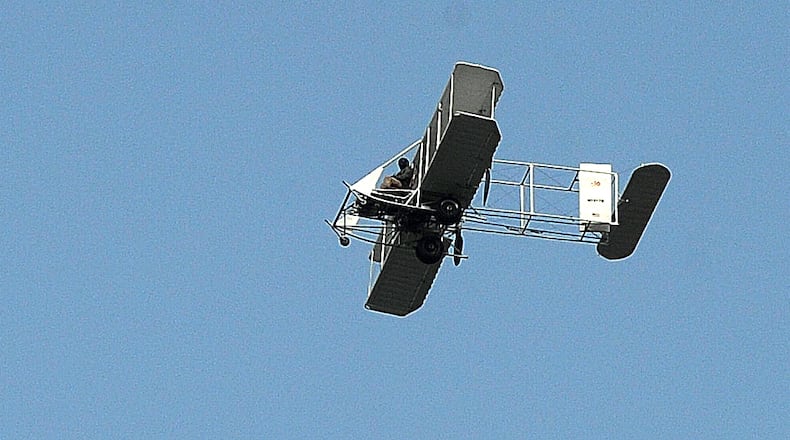“A Wright B Flyer replica, performing an aerial flyover had a malfunction that caused the engine to catch fire, resulting in an emergency landing,” the base said.
The plane experienced a “hard landing ... the pilot was able to put it down. They are unharmed,” base spokesman Marcello Bruni said Thursday.
Officials at the Wright B Flyer Museum, which owns the aircraft, declined to reveal the names of the pilots on board but confirmed the individuals were not injured.
“Just know that the pilots did an incredible job landing it, and they walked away from it and are just fine,” said museum President Don Adams.
Adams also thanked the WPAFB Fire & EMS for its quick response to the incident.
“We are grateful they were there,” he said.
Adams said Friday it’s unclear what issue led to the engine failure, but that the museum is investigating, preserving the aircraft and examining it to determine a cause.
More information will be released when it’s available, Adams said.
Update (6:25 pm) – Huge shoutout to our Wright-Patt AFB first responders for their quick response. We are grateful the two pilots were unharmed. There is no active emergency, and the incident has been cleared. For further media inquiries contact Wright-Patt AFB Public Affairs. https://t.co/mBO4ST1G3M
— 88th Air Base Wing (@WrightPattAFB) October 10, 2024
At about 6:30 p.m. Thursday, base officials said on the social media site X that the scene was cleared.
“Huge shoutout to our Wright-Patt AFB first responders for their quick response,” the base’s post said. “We are grateful the two pilots were unharmed. There is no active emergency, and the incident has been cleared.”
Wright Field, an early 20th century Dayton-area military installation and airfield used as a pilot, mechanic, and armorer training facility, was a predecessor institution of Wright-Patterson Air Force Base.
World aviation traces its beginnings to the pioneering work of Dayton’s favorite brothers, Wilbur and Orville Wright, who refined early flight above the beaches of Kitty Hawk, N.C. and the grass fields of Huffman Prairie in northwestern Greene County.
But 1927 was a key moment when the federal government took formal control of the land that became today’s Wright-Patterson.
It was land that came courtesy of a gift from the people of Dayton a few years earlier, in 1924.
When Army aviators understood they could no longer operate on crowded McCook Field north of downtown Dayton, local leaders took action to control nearby land to keep military functions local.
“The people of Dayton, just like now when there’s a base realignment and closure activity, they didn’t want to lose that great facility,” Kevin Rusnak, chief historian for the Air Force Life Cycle Management Center, said last year on the occasion of Wright Field’s 96th anniversary. “So they got together, they bought all this land that Wright Patt is now sitting on, and they donated it to the government.”
The local group raised $400,000 over 48 hours to buy land from the Miami Conservancy District — the area’s multi-county flood control effort — to give to President Calvin Coolidge and the government.
The formation of Wright-Patterson Air Force Base happened formally in 1948, the year after the official formation of the Air Force, from the merger of Wright and Patterson fields. Wright Field coincided with Wright-Patterson’s Area B today.

